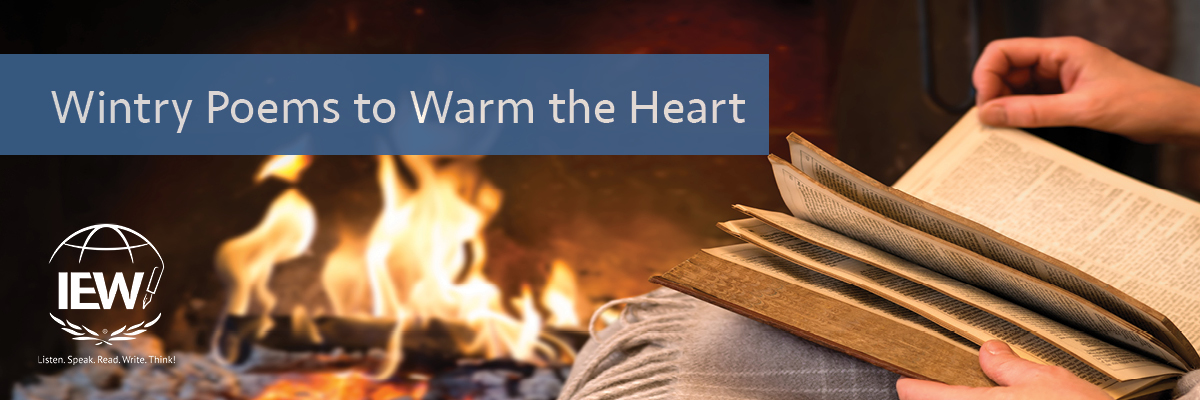
Winter. For many the word evokes thoughts of snow-crusted windows; snapping, crackling fires; blankets and quilts piled thickly on the bed; and bare tree branches glistening with sparkling ice. It’s a time of retreat: the cold wind nips noses and encourages people to stay a little closer to hearth and home. During the quiet of winter, it is warming to read poetry about the season, especially if you read it near the fireplace! This blog post presents a few wintry gems for your enjoyment. Share them with your students and family as well. To increase your students’ understanding and appreciation for the poetry, read through the commentary about each poem to facilitate discussion with your students.
Dust of Snow
by Robert Frost
The way a crow
Shook down on me
The dust of snow
From a hemlock tree
Has given my heart
A change of mood
And saved some part
Of a day I had rued.
What is a hemlock tree? You can find a photo of a hemlock tree along with some information about the species at this link. If you live in an area that has hemlocks, consider going on a nature hike to spot one. What does the word rue mean? In the final line of the poem, the word is functioning as a verb. It means to have a deep sense of regret over something. What do you think the speaker might have rued prior to receiving the dust of snow? Why might that experience have changed his perspective? How does the word affect the overall tone of the verse? Another question you could ask is when and where did Robert Frost live? Read a little about the poet and investigate other famous poems of his.
Places [III. Winter Sun]
by Sara Teasdale
(Lenox)
There was a bush with scarlet berries,
And there were hemlocks heaped with snow.
With a sound like surf on long sea-beaches
They took the wind and let it go.
The hills were shining in their samite,
Fold after fold they flowed away;
“Let come what may,” your eyes were saying,
“At least we two have had to-day.”
This brief poem carries plenty of imagery presented through various senses: sight (“scarlet berries”), touch (“hemlocks heaped with snow”), and sound (“surf on long sea-beaches”). The poet also packs a punch by including literary devices such as personification, alliteration, and simile. Some tricky words that may need defining include scarlet, which is a brilliant red color, and samite, which describes a heavy silk fabric that is woven with silver or gold. If you read the previous poem, “Dust of Snow,” you can compare the references to hemlocks in both of the poems. How are the trees presented in each piece?
The final piece in today’s post also mentions trees.
Winter Trees
by William Carlos Williams
All the complicated details
of the attiring and
the disattiring are completed!
A liquid moon
moves gently among
the long branches.
Thus having prepared their buds
against a sure winter
the wise trees
stand sleeping in the cold.
Discussion points might include determining what the “complicated details / of the attiring and / the disattiring” might be. Can your students spot the base in each of these words? What does attire mean? When the prefix dis- is added, how does it change the meaning? Imagine what a “liquid moon” might look like. How does the adverb gently help the reader understand the tone? There’s a little bit of personification going on. What would be a “sure winter”? How can the trees be wise?
A poem is like a bonbon. It isn’t meant to be gulped down. Savor it. Take your time reading the lines out loud and notice how the words flow off your tongue. Bonus points if you do it while wrapped up in a cozy afghan in front of a cheery fireplace on a cold wintry day. Despite the temperature outside, we hope your hearts will be warm inside.
|
Jennifer Mauser has always loved reading and writing and received a B.A. in English from the University of Kansas in 1991. Once she and her husband had children, they decided to homeschool, and she put all her training to use in the home. In addition to homeschooling her children, Jennifer teaches IEW classes out of her home, coaches budding writers via email, and tutors students who struggle with dyslexia. |

